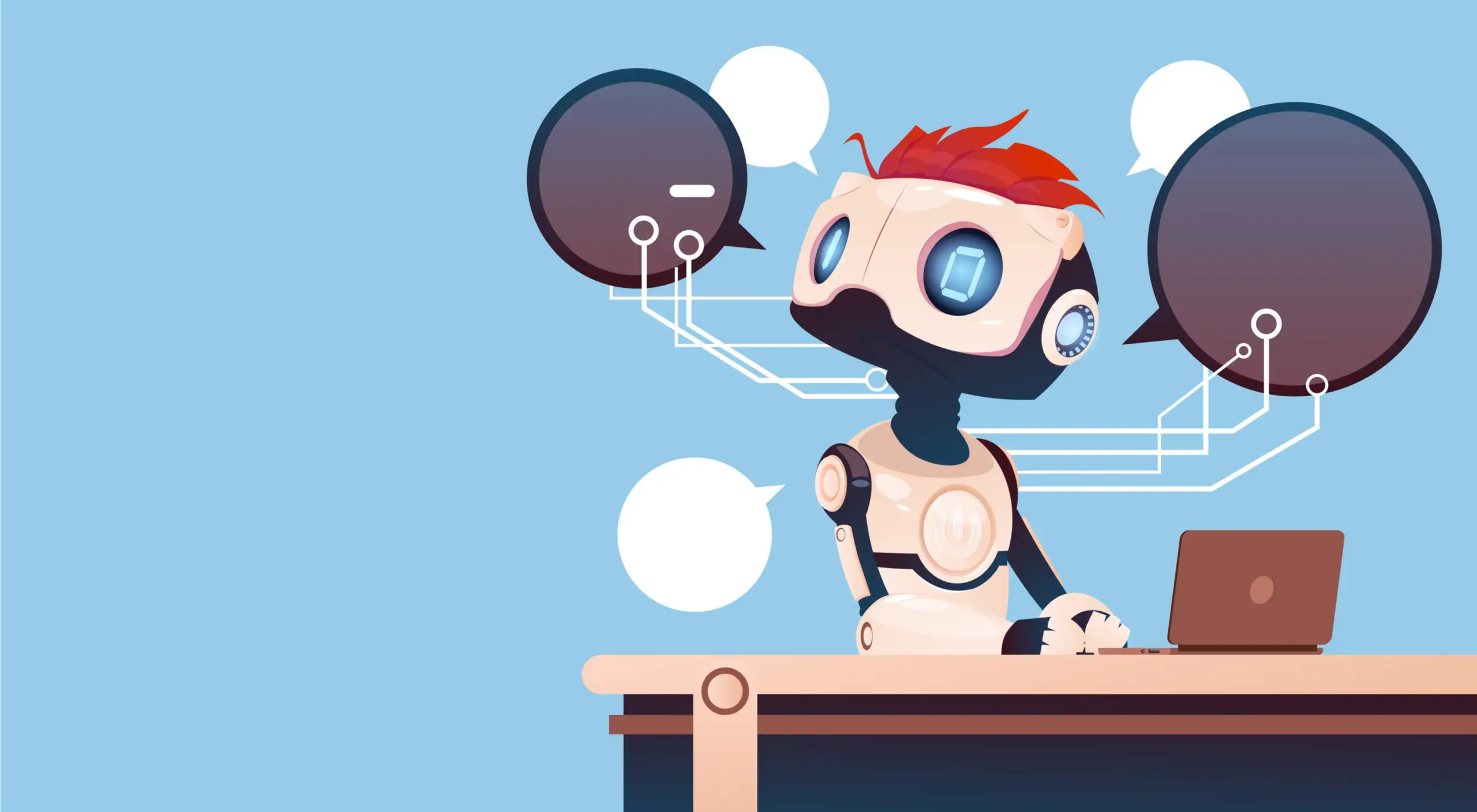With over 900 million monthly active users, WeChat is showing us that messaging apps are the places to be. WeChat is China’s most popular messaging app. It provides a totally seamless mobile experience, combining video, voice and text messaging to other users, along with the ability to make transactions and pay bills.
WeChat’s dominance in the Chinese market effectively gives them control of the entire customer journey from start to finish, while in the West we rely on a range of disparate apps for socialising, ecommerce and payments.
Last year, Facebook opened up their Messenger app for third parties to develop in-app bots that use AI to engage users on all-new personalised levels.
Developing services in messaging apps offer a number of benefits to digital marketers. They are optimised for mobile by their nature, enhance social media marketing and can provide data in real-time.
AI that can’t go rogue
Chatbots have the ability to understand and share common context. This is why many product and service-based chatbots can’t be exploited the way Microsoft’s AI, Tay, could. The AI was developed by Microsoft’s technology, research and Bing teams to “experiment with and conduct research on conversational understanding.” It all went wrong when users started to troll Tay’s Twitter feed.
Tay in most cases was only repeating other users’ inflammatory statements that soon flooded its feed, but the nature of AI means that it learns from those interactions and took the racist sentiments as truth. Needlessly to say, Tay was quickly retired from public life by Microsoft.
By understanding context, chatbots are able to follow the thread of the user’s conversation as they move from one topic to the next and dismiss anything that wouldn’t make sense in the context of the conversation. A chatbot powerful enough to follow a conversation in context provides a number of benefits to both users and brands.
History Lesson: AI & Chatbots
1950 Turing Test developed to determine a machine’s ability to exhibit human behaviour
1966 ELIZA, the first chatbot built at MIT
1988 Jabberwocky take chatbots from text-based to voice-operated
1989 Deep Thought, a chess-playing AI defeats chess masters
2006 IBM’s Watson designed to win Jeopardy! It succeeded in 2011
2010 The world says “Hello!” to Siri
2015 Amazon launches Alexa on the Echo, Microsoft launches Cortana
2016 Microsoft’s Tay AI is trolled and exploited into racist oblivion
2016 Domino’s allows you to order pizza via an emoji in Facebook Messenger
Potential for marketing
A conversational experience is far more engaging for users, making them feel more positive about your brand. By following conversations and making suggestions of its own, a chatbot can assist a user as they navigate through your product line up and offer opportunities for up-selling.
Email open rates from marketing campaigns is about 20%, with over 50% of users accessing their email from mobile devices. Conversely, messaging apps are exclusively mobile, can capitalise on push notifications and studies show that private messages enjoying a 98% average open rate. This presents a powerful opportunity for future marketing campaigns.
As chatbots engage with customers in real time, they can log and store key data points. You can use these to optimise user experience, personalise the user’s visit and offer insights into your audience’s behaviour to help you target your marketing.
Brands should use the context and intelligent feedback provided by messaging apps to leverage and re-frame their existing content. Content marketing is one of the biggest assets for brands, but nearly all delivery systems thus far have no way of determining context.
App fatigue is pushing brands towards chatbots
Brands are being pushed towards chatbots due to the failure of apps in providing a satisfactory mobile experience to customers. With the rise of the App Store, the primary strategy for the last ten years has been to use apps to drive engagement on mobile. Everyone needed an app and there was an app for everything. But, for traditional vendors, even established brands, this has had mixed results.
App download figures have stagnated in the last five years. 5 out of 10 apps are used fewer than 10 times and 2 out of 10 are used only once. The time for new apps it seems, is over. Today, it’s getting hard to get users to even download a new app, let alone use it for any length of time.
Chatbots offer an alternative way to engage users on mobile without relying on an app. Building a bot in an established app that your audience uses, such as Facebook Messenger, brands can continue to engage users on platforms they are already familiar with.
What can we do with chat bots today?
Order coffee…
Starbucks makes ordering your morning coffee a breeze, whether your prefer using voice commands or text messaging. Their chatbot will not only remember your favourite orders, but it will tell you when your order will be ready and the total cost. No need to queue any more, just place your order and pick it up.
… and pizza!
Message the pizza emoji to Domino’s and they will send your favourite pizza straight to your door! Once you’ve registered an account with Domino’s and saved your preferred pizza toppings, you’re just one emoji away from your dinner. For regular users who know exactly what they like, Domino’s chat bot makes it as easy as possible to get a pizza.
Put together the perfect playlist
Chat to Spotify over Facebook Messenger and you’ll get playlist recommendations based on your mood, what you’re doing or what genre you like. You can also search for anything and even share your music with friends, all from Facebook Messenger.
Get the news
The Wall Street Journal chatbot makes it easy to stay on top of the news and stock quotes that matter to you. You can customise alerts to get news and stock information from the companies and stocks that you’re interested in, compare companies and even get live stock quotes all from the Facebook Messenger chatbot. The Wall Street Journal chatbot delivers highly customised content tailored to every user.
Order clothes
From ASOS to EBay, clothing retailers are making online clothes shopping more personalised and much easier to navigate. For ecommerce brands with hundreds of categories of products, different sizes or styles, chatbots allow users to find exactly what they’re looking for with just a few prompts. Say you’re looking for a red maxi dress in a size 12 and the chatbot will show you exactly what’s in stock in the size you specify. Once you’re shopping regularly, the chatbot can also recommend upsell items based on your shopping habits and style.
The next big thing in marketing?
Chatbots will be huge for marketers because they allow them to finally leverage content and context at once. By their very nature, messaging apps are contextual and flexible. This will require marketers to completely rethink their current approach to apps in the more traditional sense. At MRS Digital, we keep our fingers on the pulse and are continuously working with the latest developments and trends in digital marketing. If you’re looking for a digital marketing agency that is forward thinking and passionate about the latest trends, you’ve come to the right place.






